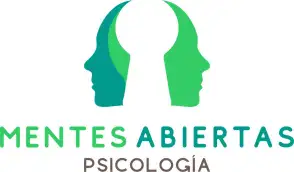Imagine facing a hostile environment every day at work or university. Glares, hurtful comments, subtle but persistent exclusion. After weeks of this treatment, some people emotionally collapse. Others, however, stand firm, preventing the external storm from turning into an internal tempest.
What determines who falls and who resists? The answer seems to lie in a small yet powerful part of our brain that shapes how we handle challenges: the hippocampus. A recent study explored its role in determining susceptibility or resilience to chronic social stress and found that the key might lie in how we remember and process social interactions.
Chronic Social Stress: The Invisible Weight That Shapes Our Minds
Stress isn't just the product of a hectic schedule or a long to-do list. A much more insidious form of stress stems from human relationships. Exclusion, rejection, subtle or overt aggression can cause profound changes in our brain, especially when they happen repeatedly.
Chronic social stress is one of the strongest predictors of depression and anxiety. It’s no coincidence that people who have experienced bullying, workplace harassment, or toxic family dynamics are at greater risk of developing mood disorders. But the question remains: why do some individuals seem immune to this kind of stress while others are deeply affected?
To explore this, researchers used a model called chronic social defeat stress (CSDS). In this model, mice are repeatedly exposed to a larger, dominant aggressor, simulating a social bullying dynamic. After multiple sessions of this "stress training," some mice exhibit clear signs of social avoidance—they withdraw from others, avoid interaction, and display behaviors analogous to depression in humans. However, another group remains resilient, continuing to socialize without fear or withdrawal.
This is where the hippocampus comes into play. Researchers wanted to understand whether the way this structure processes social memory influences a mouse’s ability to resist chronic social stress.
The Hippocampus and Social Memory: The Difference Between Remembering and Surviving
The hippocampus is a key brain region for memory and emotional regulation. It helps us recall where we’ve been, who we’ve interacted with, and, most importantly, distinguish between positive and negative experiences. When it comes to social memory, the hippocampus acts like a filing system, storing information about who has treated us well and who has harmed us.
Using advanced neuroimaging techniques, researchers recorded neuronal activity in a specific hippocampal subregion called the dorsal CA1 (dCA1). They discovered something fascinating: how this region processes social information differs dramatically between resilient and susceptible mice.
Resilient mice showed highly stable and organized neuronal activity patterns during social interactions, suggesting their brain had a clear and precise representation of social memory. In other words, they knew exactly who they were dealing with and could effectively categorize their experiences.
In contrast, susceptible mice displayed more chaotic and less coherent activity in this region, suggesting that their social memory was more diffuse or ineffective. As a result, they seemed to struggle to differentiate past experiences from present ones, potentially making them perceive any new interaction as a threat.
Key Brain Differences Between Resilient and Susceptible Mice
- Size of neuronal assemblies: Resilient mice had larger and more connected groups of neurons, while susceptible mice had a weaker neural integration.
- Recognition of known individuals: Resilient mice clearly distinguished between familiar and unfamiliar mice, whereas susceptible mice struggled to do so.
- Neuronal reactivation: In resilient mice, the same neurons consistently activated during repeated social interactions, while in susceptible mice, activation was erratic.
What Does This Mean for Humans?
These findings resonate strongly with human experiences. Studies on people with depression have shown that they tend to remember social events in a less specific way, a phenomenon known as overgeneralized autobiographical memory. Instead of recalling concrete details of an interaction, their brain stores a vague and blurry impression, which can contribute to a persistent sense of social threat and uncertainty.
Similarly, the tendency to recall negative experiences more easily than positive ones could also be linked to altered hippocampal activity. If our social memory "file" is disorganized, we may be more prone to perceiving new encounters as dangerous, even when they are not.
The Role of Training and Neuroplasticity
Although this study suggests that biological differences affect how we process social stress, it also offers a hopeful perspective: neuroplasticity.
The brain is not a rigid organ; it continuously changes and adapts. If the hippocampus plays a key role in resilience to social stress, strengthening its function could be an effective strategy to reduce vulnerability to depression.
Techniques like cognitive-behavioral therapy, social skills training, and mindfulness have been shown to positively influence hippocampal regulation. Even activities like physical exercise and exposure to positive social environments can help reinforce its ability to process social memory more effectively.
This study leaves us with a fascinating question: can we "train" our social memory to be more resilient to stress? If the answer is yes, we could be looking at a promising path for preventing and treating the negative effects of chronic stress on mental health.


